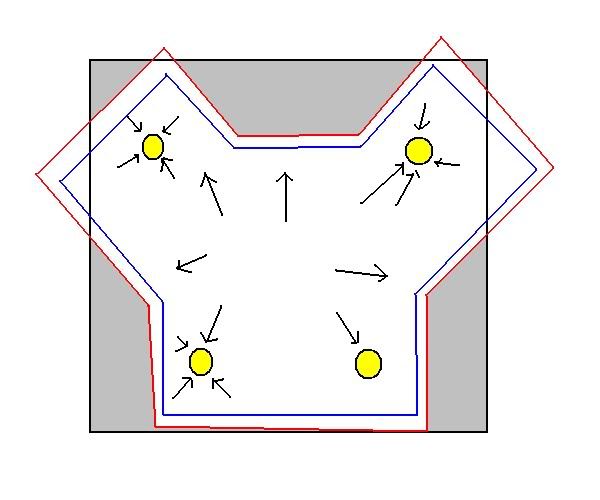COMPOSITE MATERIALS FOR AIRCRAFT STRUCTURES wrote:
Hybrid Metal/PMC Composites
Structural metals, such as aluminum alloys and composites, including carbon/
epoxy, have a variety of advantages and disadvantages for airframe applications. For example, metals are prone to fatigue cracking but PMCs are not; PMCs are easily
damaged by low-energy mechanical impacts but metals are not. Thus, the potential
exists to combine these materials in such a way as to get the best of both materials.
One such approach is the aluminum/fiber composite hybrid laminate, 13 which
consists of thin sheets of aluminum alloy bonded with a fiber-reinforced
adhesive. When a crack grows through the metal, the fibers, which are highly
resistant to fatigue damage, are left spanning or bridging the crack in its wake
(Fig. 1.7). The result is a reduction in crack growth rate by approximately
one order of magnitude and an insensitivity to crack length. However, the fibers
have little influence on crack initiation and, indeed, because the hybrid composite
has relatively low modulus, the increased strain in the aluminum alloy can
encourage earlier crack initiation. The fibers also significantly increase the postyieldstrength compared with unreinforced aluminum alloy, and the composite has a much higher damping capacity.
Disadvantages of these materials include sensitivity to blunt notches due to the
inability of the fibers to withstand very high strain levels. Thus, the notch
insensitivity of metals is not retained in the hybrid. Also, depending on the
reinforcement used, the elastic modulus of the hybrid is generally lower than
aluminum alloys, however, this is compensated for by a reduction of specific
gravity of between 10-15%. Another problem is cost, which is typically 7-10
times that of standard aerospace-grade aluminum alloys.
The aluminum alloy is generally either 2024 T3 or 7475 T761, 0.2-0.4 mm
thick. The composite is aramid (Kevlar) or glass fibers in an epoxy nitrile
adhesive, around 0.2 mm thick for unidirectional reinforcement, or 0.25-0.35 mm
thick for (glass reinforcement only) cross-ply. With aramid reinforcement, the
laminate is called ARALL (aramid reinforced aluminum laminate), and with
glass fiber, GLARE. Because of the sensitivity of aramid fibers to compressive
stresses and the favorable residual strength that is produced, ARALL may be
pre-stretched. This also overcomes, at a cost, the adverse residual stresses arising from the differences in thermal expansion coefficient between aramid, or glass, and aluminum. GLARE does not require pre-stretching as the high-strain glass
fiber used is less susceptible to compressive stresses. Consequently, the glass
fibers can be cross-plied to give crack growth resistance in two orthogonal
directions as may be required for a fuselage structure. Although GLARE has a
lower modulus than conventional aluminum alloys, with a reduction of around
20% (particularly with cross-plied fibers), it has the best resistance to fatigue
crack growth.
Significant weight savings--20% or so---can be achieved in fatigue-prone
regions such as pressurized fuselage skins and stiffeners and lower wing skins by
the use of these materials. The hybrid composites are also suited to high-impact
regions such as leading edges and inboard flaps and to components subject to
mishandling, such as doors.
For applications requiring higher stiffness and strength, as well as a higher
temperature, capability studies have been conducted 13 on hybrid laminates made
of thin sheets of titanium alloy (Ti-6A1-4V) and a low-modulus carbon fiber
composite. The matrix for the composite and adhesive is a thermoplastic (PEEK).
This laminate is reported to have excellent resistance to fatigue crack growth as
well as good blunt-notch strength.











